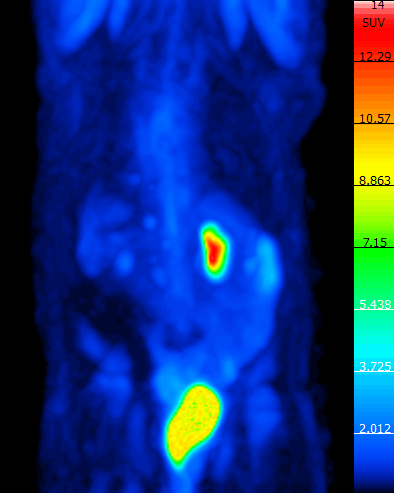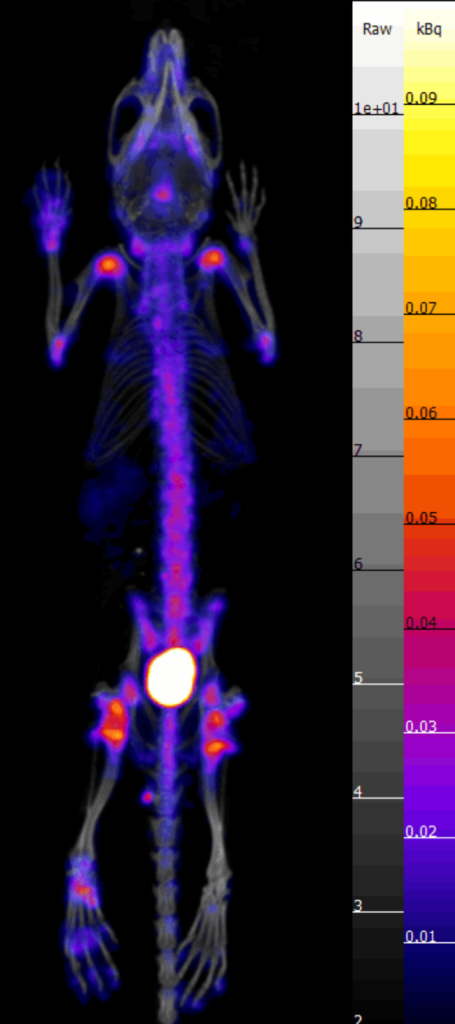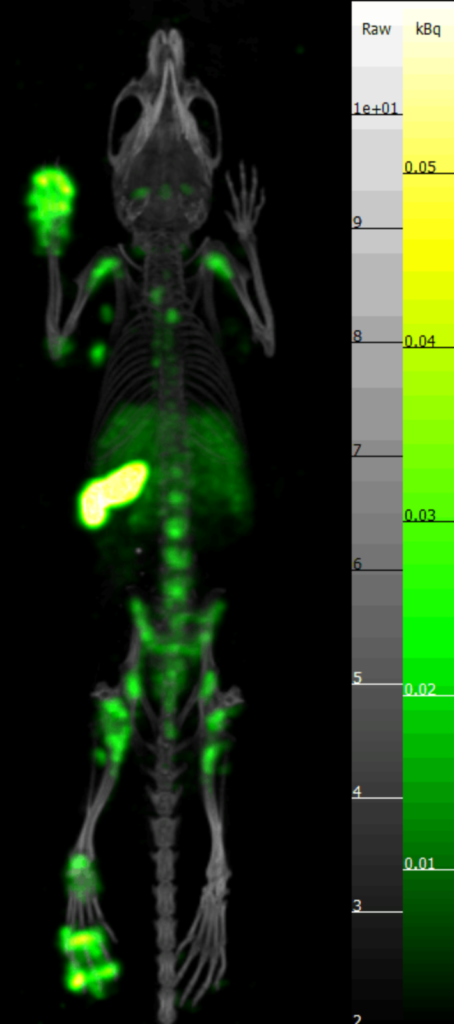Typage et Archivage d'Animaux Modèles - UAR 44
Gamma-scintigraphy (or 2D scintigraphy), Single Photon Emission Computed Tomography (SPECT or 3D tomo-scintigraphy), Positron Emission Tomography, (PET) are procedures by which a signal is obtained from a compound labelled with a radioactive atom. These methods are quantitative, functional and molecular; the resolutions are millimetric (in the range of 0.8mm in vivo for the laboratory SPECT).
These procedures are implemented in an environment authorised by France’s Nuclear Safety Authority.
For these procedures we use gamma emitting radio-nuclides.
Principal radio-elements authorised in the imaging facility: Technetium 99m, Indium 111, Iodine 123, Gallium 67, Krypton 81m.
PET implements radio-elements called positron emitters. It is based on the detection of two 511 KeV gamma photons emitted 180° from one another when a positron is annihilated with an electron.
Radio-elements authorised in the imaging facility: Fluorine 18, Carbon 11, Copper 64.



Our equipment is as follows:
– Monitoring, synchronising on ECG and respiration (external sensor) and maintaining body temperature (SA Instruments system)
– Containing animals under gas anaesthesia during examination, with possibility of exploring 3 mice simultaneously.